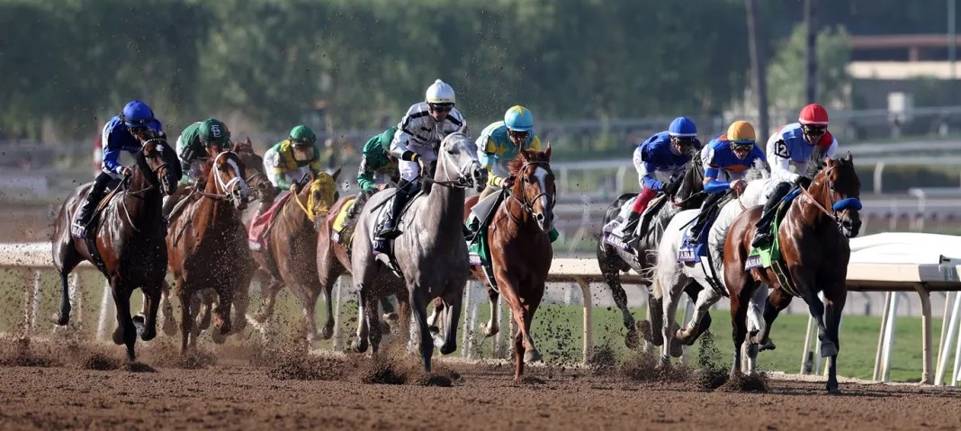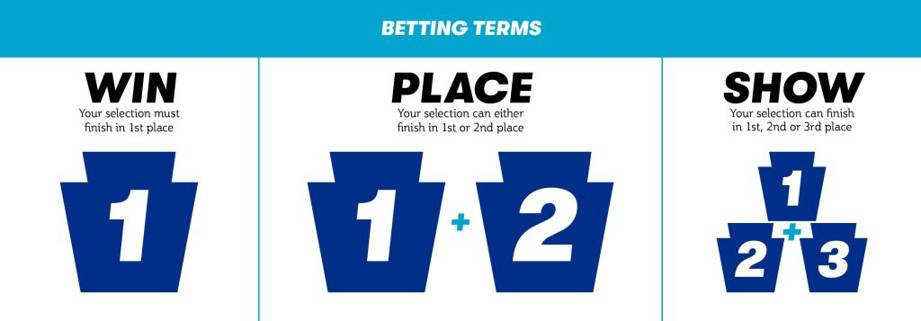A Beginner’s Guide to Horse Race Betting

HorseRacing
Horse racing is a thrilling sport filled with the thunder of hooves and the excitement of the chase. But it’s not just about watching – you can add to the fun with a wager! If you’re new to horse race betting, this guide will help you get started with your first bet.
Basic Terminology
Before you place your first bet, it’s important to understand some basic terms:
- Horse Names and Numbers: Each horse is assigned a name and a number for easy identification, especially in larger fields.
- Jockeys, Trainers, and Owners: Jockeys ride the horses, trainers prepare them for races, and owners are the ones who invest in the horses.
- Past performances: A horse’s racing record, earnings, bloodlines, and other data, presented in composite form.
- Scratch: A horse that is withdrawn from a race.
- Types of Races: Understanding the type of race will give you valuable context when choosing your bet.
- Flat Racing: This is the most common type, with horses galloping at top speed over a flat, oval track.
- Jump Racing (also known as Steeplechasing or National Hunt racing): Here, horses race over obstacles like fences and hurdles, demanding a different skillset from both horse and jockey.
- Harness Racing: In this variation, the horses trot or pace while pulling a lightweight sulky chariot driven by a skilled rider.
- Endurance Racing: This tests the horse’s stamina and ability to cover long distances, often ranging from 25 to 100 miles, with minimal jockey intervention
- Handicap Racing: A race where horses carry different weights based on past performances to equalize chances.
- Stakes Racing: A race for which the owner usually must pay a fee to run a horse.
How Betting Works
- Betting Odds: Odds reflect a horse’s chance of winning and determine your payout. For example, odds of 5/1 mean if you bet $1, you win $5 if the horse wins.
- Reading the Odds:
- Decimal Odds: Common in Europe, Australia, and Canada. Odds of 3.00 mean you win $3 for every $1 bet.
- Fractional Odds: Common in the UK. Odds of 5/1 mean you win $5 for every $1 bet.
- Moneyline Odds: Common in the US. Positive odds (e.g., +300) show how much profit you’d make on a $100 bet, while negative odds (e.g., -150) show how much you need to bet to win $100.
Higher odds indicate a lower probability but a higher payout, while lower odds reflect a higher probability and a lower payout.
- Types of Bets: Now, let’s talk about the different ways using which you can place your bets. Here are some beginner-friendly options:

Types of bets
-
- Win:
- What is it? Bet on a horse to finish first.
- Why choose it? It’s straightforward—if your horse wins, you win.
- Place:
- What is it? Bet on a horse to finish in the top 2 or 3.
- Why choose it? Provides a better chance of winning with slightly lower payouts.
- Show:
- What is it? Bet on a horse to finish in the top 3.
- Why choose it? It offers the highest chance of winning but with the smallest payout.
- Win:
- Beyond the Basics: Once you’re comfortable with basic bets, you can explore more advanced options for a richer betting experience:
- Each-Way Bets:
- What is it? A combination of a win and a place bet. If your horse doesn’t win but places, you still get a return.
- Why choose it? It offers a balance of risk and reward, especially with longer odds.
- Each-Way Bets:
-
- Exotic Bets:
- Exacta: Predict the first two finishers in order. Offers higher payouts than simple bets.
- Trifecta: Predict the first three finishers in exact order for potentially significant payouts.
- Superfecta: Predict the first four finishers in order—high risk but can lead to large rewards.
- Daily Double: Pick winners of two consecutive races, often with better returns than individual bets.
- Exotic Bets:
-
- Boxing Your Bets: Covers multiple combinations of your selected horses, increasing your chances but also the cost.
Exploring these options adds variety and excitement to your betting, with the potential for higher rewards as you gain experience.
- Payout: Payouts in horse race betting are determined by the odds you bet on and the amount you wager. If your horse wins, you receive a payout based on the odds set before the race. For example, if you bet $10 on a horse with 5/1 odds and it wins, you’ll receive $50 in profit plus your original $10 stake, totaling $60. Different betting types (win, place, show) and exotic bets have varying payout structures.
Decoding the Race Program
A race program is your best friend at the track. It contains all the information you need about the races, horses, jockeys, and more. You can find race programs at the racetrack, in racing publications, or on various betting websites. Here’s how to read it:
- Horse’s Name: The name of the horse you’re betting on.
- Jockey: The rider of the horse.
- Trainer: The person who conditions the horse.
- Owner: The person or entity that owns the horse.
- Morning Line Odds: A glimpse into the predicted odds set before the race commences.
- Past Performances: Detailed records of the horse’s previous races, showing dates, track conditions, race classes, distances, finishing positions, times, and more.
- Weight: The weight carried by the horse, including the jockey and gear.
Placing Your Bet: A Step-by-Step Guide
- At the Track
- Select Your Race: Decide which race you want to bet on.
- Choose Your Bet Type: Opt for a straight bet or an exotic bet.
- Pick Your Horse(s): Use the race program to study the horses’ past performances.
- Determine Your Wager Amount: Set the amount you want to bet.
- Place Your Bet: Go to the betting window, and state your race number, bet type, horse number, and wager amount. For example, “Race 3, $5 to win on horse 7.”
- Online Betting
- Select Your Race: Choose the race you want to bet on from the online platform.
- Choose Your Bet Type: Select between straight and exotic bets.
- Pick Your Horse(s): Use the online race program or stats provided on the platform to make your selection.
- Determine Your Wager Amount: Enter the amount you wish to bet.
- Place Your Bet: Follow the online platform’s instructions to place your bet, including specifying the race number, bet type, horse number, and wager amount.
Basic Strategies for Beginners
- Research and Analysis
- Past Performances: Analyze a horse’s previous races to gauge its performance.
- Track Conditions: Assess how different conditions affect the horses.
- Form and Fitness: Evaluate the horse’s recent form and overall fitness.
- Bankroll Management
- Set a Budget: Decide how much you will bet and stick to it.
- Avoid Chasing Losses: Don’t increase your bets to recover from losses.
- Start Small
- Begin with Small Bets: It’s always advisable to start betting with a small amount. Begin with a modest budget and avoid risking too much at once.
- Diversify Your Bets: Diversifying your bets can also help manage risks better. For instance, you could place smaller bets on multiple races or horses rather than putting all your money on one bet. This approach can make your betting experience more enjoyable and less stressful.
- Avoiding Common Pitfalls
- Over-Betting: Resist the urge to place too many bets to win back losses.
- Ignoring Research: Base your bets on thorough research rather than luck alone.
Conclusion
Horse race betting combines the thrill of competition with the satisfaction of making informed choices. By understanding the basics, studying the race program, and following smart betting strategies, you can enhance your enjoyment and maybe even walk away with some winnings. So, next time you’re at the track or betting online, remember these tips and get ready for an unforgettable experience. Happy betting, and may your horse be the first past the post!
For more insights on race bets, check out this detailed guide.

